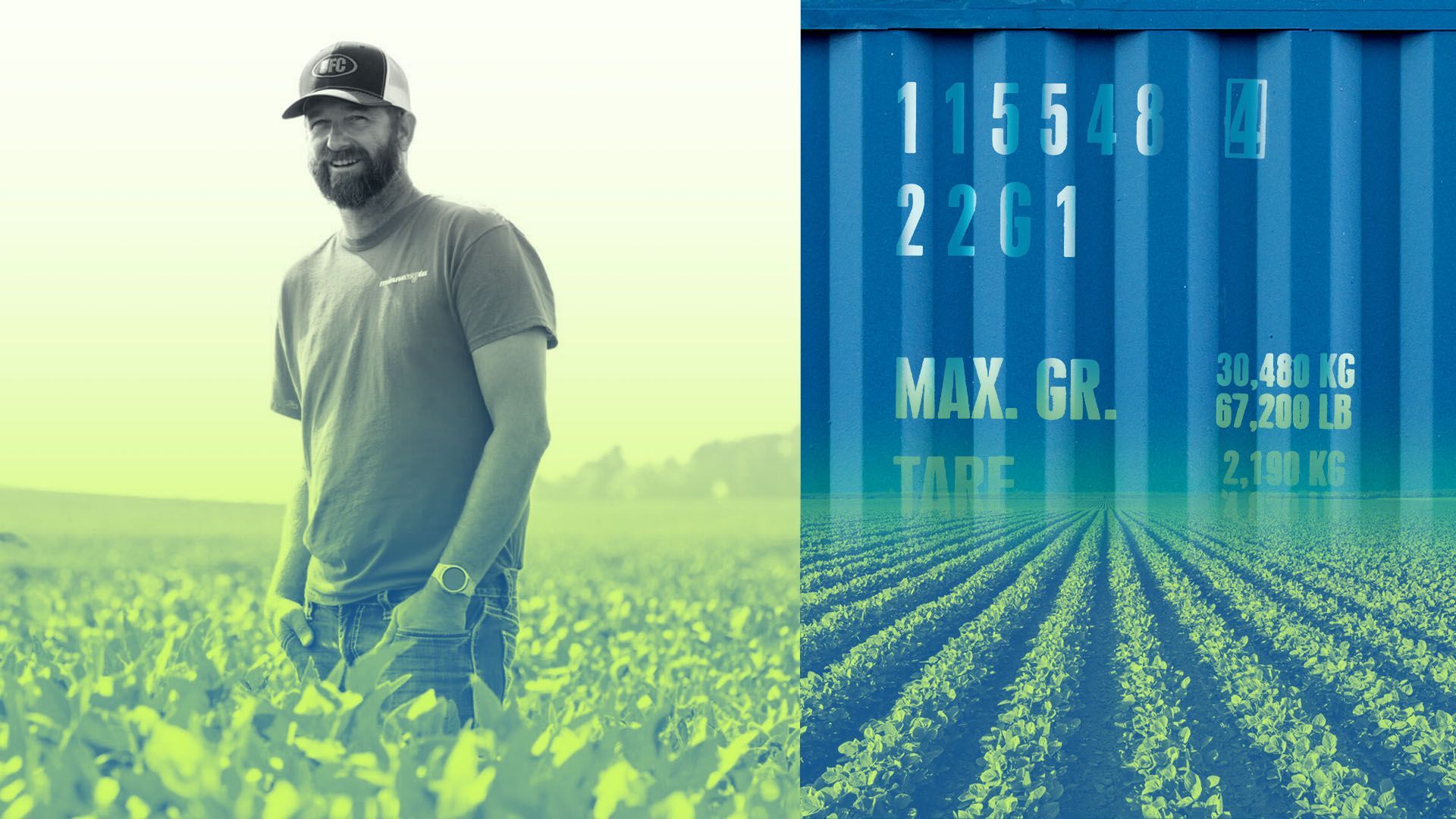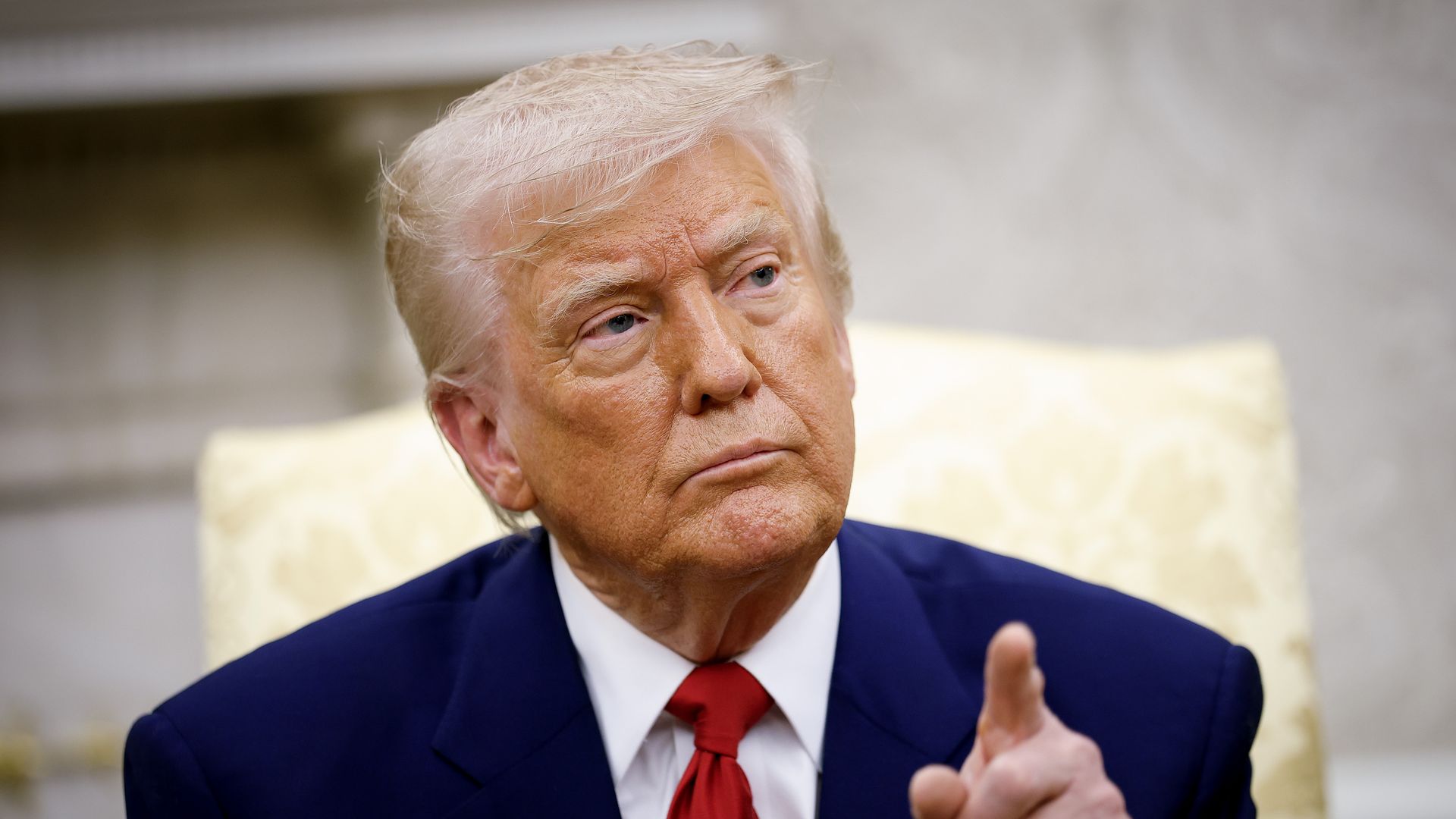| |
|
|
| |
|
Presented By RTX
|
| |
|
Axios Markets
|
|
By
Emily Peck and Felix Salmon
·
May 16, 2025
|
|
The transformative changes of Donald Trump's America aren't immediately apparent in the stock market bounce back or other traditional indicators. - Anecdotes are, for now, the best window into how things are playing out in the real economy, as our colleagues at Axios Macro wrote yesterday.
- So today we bring you a special edition of Axios Markets, gathering up a bit of the anec-data, all in 1,560 words, a 5-minute read.
|
| |
| |
|
1 big thing: "Made in America" crisis
|
| |

|
|
|
Illustration: Lindsey Bailey/Axios
|
| |
|
There has never been a better time for businesses that manufacture goods in America. - But there has never been a worse time to sell such products overseas.
Why it matters: "Made in USA" brands have been touted as the nation's trade war winners. Yet even those that don't rely on tariffed materials from abroad are taking a hit. - The trade war has ignited new waves of economic nationalism in countries like Canada, whose citizens are loathe to purchase American brands.
- This is part of the nuanced story about how domestic producers are faring, even as trade tensions have eased.
What they're saying: "No one wants 'Made in USA' anymore," Pepper Harward, chief executive of footwear retailer Oka Brands — which partners with other big brands, including New Balance and Walmart — tells Axios. - "Canada, South Korea, Japan, all those markets have softened. That was real business for us," Harward says. Most of his customers are domestic, business he describes as "ok, not great."
The big picture: Trump officials say the administration's tariff policy is aimed at making more businesses like Oka. But most American small businesses are not like Oka. Even many that make goods in the U.S. rely on foreign inputs. - That has benefited a subset of manufacturers whose higher-priced and domestic-made goods look more competitive. But the uncertainty eats away at any upside, and as tariffs fade, so do any tailwinds.
Flashback: When Axios spoke with Harward earlier this month, he said that "popular" was the best way to describe himself. There was huge demand from other retailers for the inputs produced in the U.S. at Oka's factory in Georgia. - "There is a lot of desperation out there, my phone is ringing off the hook. It's super busy," he said. "They have stuff tied up in China and looking for short-term solutions."
Harward predicted that very few of those business opportunities would actually manifest into sustainable partnerships. - "We would be buried by selecting the wrong partners or trying to do things out of their desperation. I am confident that 90% of this business interest will go away as soon as tariffs are gone," he added.
The bottom line: The inbound requests have slowed since tariffs on Chinese goods were cut to 30% from 145%, Harward noted. - "People are less interested. People are already talking about going back to the new normal," he said. "Just like that. That quickly."
|




|
| |
| |
|
2. Fired, rehired, fired and rehired
|
|
By Emily Peck
|
| |

|
|
|
Illustration: Sarah Grillo/Axios
|
| |
|
Plenty of adults know what it's like to be fired, but for federal workers these days, getting canned once is just table stakes. The big picture: Many have been fired, rehired, fired and hired again, and are still waiting to find out how long their employment could last. - It's the very opposite of efficiency or productivity, according to workers.
Zoom in: One employee at the Consumer Financial Protection Bureau has been fired twice and had it reversed twice. They spoke on the condition of anonymity for fear of retaliation at work, where things are tenuous. - This worker has been speaking to Axios since February, after the Trump administration ordered the agency to stop all work.
- They were terminated the first time then, one of tens of thousands of "probationary" employees who were let go across agencies.
- "It's been pretty exhausting dealing with everything," they said.
What happened: The first firing was a sloppy process, done through a form letter that didn't even include this person's name. Pay and benefits were cut immediately. There was a particularly stressful period where there was no health insurance for their entire family, all covered under their plan. - About a month later, after a federal judge ruled the probationary firings were illegal, they were reinstated and ultimately received six weeks' back pay for the time away. And it was inefficient, taking three weeks for this remote employee to get all equipment back up and running.
- Just a couple weeks after that, almost all employees at the CFPB received reduction-in-force notices. They were all fired in the RIF, part of the White House's effort to drastically scale back the federal workforce.
- They were given one day before their computer access was shut off. Then that same week, thanks to another court case, the RIF was rescinded.
Things are not back to normal now. There is not a lot of actual work to be done at the CFPB these days as leadership has put a stop to much of it. - "We're all sweating now that we're just going to be terminated outright again," this worker said.
The bottom line: Putting workers in a state of high anxiety was a stated goal of Russell Vought, who is now acting head of the CFPB. - "We want the bureaucrats to be traumatically affected," Vought said in a speech last year, first reported by ProPublica.
- "When they wake up in the morning, we want them to not want to go to work," he said. "We want to put them in trauma."
|




|
| |
| |
|
3. You just can't grow optimism
|
|
By Geoff Ziezulewicz
|
| |

|
|
|
Illustration: Sarah Grillo/Axios. Photo: Ryan Mackenthun
|
| |
|
As Ryan Mackenthun plants his soybeans and corn this spring across 2,300 acres of Minnesota farmland that cradles his family's 1887 homestead, he is both fearful of President Trump's latest tariffs and still smarting from those enacted during his first term. The big picture: The 48-year-old father of three said he and his brethren have yet to see any impact from the "Liberation Day" proclamations. But that doesn't mean it isn't top of mind across an already stressed and strained industry. - He's in the animal feed business, and much of his soybeans and corn are sold to other countries, which use it to feed their chickens, hogs and cows.
- Soybean prices have been flat for about a year, and China's appetite for crushed soybean meal has been dropping for years, Mackenthun said.
- "If we had this conversation 10 years ago, we'd say one in every three rows…went to China. Today that conversation is one in every four," he said.
- "We've lost that market already, we don't want to lose any more."
After Trump enacted tariffs against China in 2018, Beijing swiftly responded, and Mackenthun's soybeans joined a list of more than 100 U.S. products that fell victim to those retaliatory tariffs, sending prices plunging. - "It makes me, as a farmer, really nervous if we see that again," he said. "It'll be devastating, so we're hoping for a quick resolution to this whole tariff war."
- Meanwhile, China increasingly buys its soybeans from Brazil.
Zoom out: Beyond China, farmers like Mackenthun also sell to Mexico, Canada, India, Japan and Taiwan, he said, and they are trying to develop markets from the European Union to Morocco and Uzbekistan. - But developing new markets and relationships takes time, he said, and those nations need to build crush plants and other infrastructure.
State of play: There are second-order effects to tariffs as well, Mackenthun noted, adding that farmers get "a lot of raw ingredients" for crop protection products from China. - "We get a lot of parts from other countries, for equipment," he said. "We're going to see a lower price from lower demand for our product, and a higher cost of inputs, so it's a little scary."
- He reinvested in his farm in recent years when rates were low and now plans to weather the current tariff storm with his equipment on hand.
The intrigue: Mackenthun, vice president of the Minnesota Soybean Growers Association, said he has planted more corn than ever this year, a commodity whose price has risen since December. - But he doesn't see more corn as the solution to surviving the tariffs.
- "That might work for a year, but if everybody does that, then we'll have an oversupply of corn, and the corn price will go down," he said.
What's next: Mackenthun has been encouraged by the talk of talks between Washington and Beijing, and tariff pauses on other nations, which provide "a little optimism that things will get resolved quickly." - "But I don't get my hopes up too high anymore," he said.
|




|
| |
| |
|
A message from RTX
|
|
100 years of powering the future
|
| |

|
| |
|
RTX pushes the boundaries of known science — and finds new ways to connect and protect our world.
As a part of RTX, Pratt & Whitney’s history is a story of dedication, from developing era-defining engines in the early 20th century to unleashing new technologies that power the skies today.
Read more.
|
| |
| |
|
4. The White House stands firm
|
| |

|
|
|
Photo: Kevin Dietsch/Getty Images
|
| |
|
The White House position is clear: Trump's policies will lead to better trade deals, a resurgence in American manufacturing and a stronger economy. Why it matters: The president's economic platform got him back into office after four years out, and the country is expecting him to deliver. What they're saying: "President Trump's Policies Keep Paying Off," the White House said in a press release yesterday, touting the deals Trump made in the Middle East this week. - It said those deals, and others previously made, were "investments that will bring tens of thousands of new, high-paying jobs to communities across the country as President Trump ushers in the new Golden Age."
- The White House this week cited economic data showing that inflation fell to a four-year low. Meanwhile, hiring remains strong and the stock market is rebounding.
For the record: "The Trump administration is committed to restoring American Greatness with an America First economic agenda of negotiating balanced trade deals, cutting regulations, unleashing energy, and streamlining our government," White House spokesman Kush Desai says. - "President Trump delivered historic job, wage, and economic growth in his first term, and he's laying the groundwork to repeat the magic in his second term."
The bottom line: Economic "soft data" says people are scared about inflation and recession. The "hard data" says the economy is holding up just fine. - Until all the uncertainty shakes out, expect to hear plenty more anecdotes from the real economy.
|




|
| |
| |
|
A MESSAGE FROM RTX
|
|
How do we push beyond Mach 5?
|
| |

|
| |
|
RTX advances defense capabilities, creating a safer world.
Raytheon, an RTX company, is developing hypersonic vehicles that can survive speeds of Mach 5 or greater at extreme temperatures. We solve customers’ toughest challenges from seabed to space, and everywhere in between.
Read more.
|
| |
|
Thanks to Ben Berkowitz for editing and Anjelica Tan for copy editing. Have a nice weekend!
|

|
|
Why stop here? Let's go Pro.
|
|
|
|